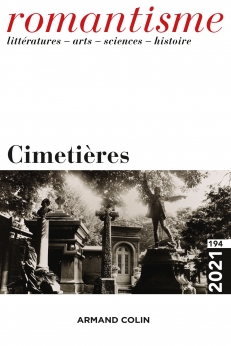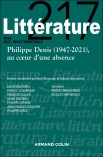
ROMANTISME N°194 (4/2021)
Pour acheter ce numéro, contactez-nous
Recevez les numéros de l'année en cours et accédez à l'intégralité des articles en ligne.
Cet article s’intéresse à la représentation des pratiques de lecture qui sous-tendent l’investigation archéologique dans trois fictions narratives du XIXe siècle. En réintégrant l’écriture des choses dans l’espace du livre, la pompéiomanie littéraire semble remettre en cause le primat du vestige matériel sur l’écrit qui fonde l’archéologie comme discipline scientifique. Mais c’est pour mieux confronter la lecture au désir d’étreindre une empreinte. Dans ces fictions, le site de Pompéi s’avère en effet propice à toutes sortes de fantasmes et d’hallucinations, ce qui permet d’articuler la connaissance du passé matériel et le déchiffrement de la psyché humaine autour d’un même objet-vestige. Cette réflexion sur la lisibilité des traces archéologiques vise ainsi à éclairer les antécédents littéraires de la métaphore archéologique chère à Sigmund Freud.
This article examines the representation of the reading practices that underlie archaeological investigation in 19th Century narrative fiction. By reintegrating the writing of things into the space of the book, literary Pompeii-mania seems to call into question the primacy of the material vestige over the written word, which founds archeology as a scientific discipline. However, it only leads reading to confronting with the desire to embrace an imprint. In these fictions, Pompeii is an archaeological site full of fantasies and hallucinations, which allows literature to articulate knowledge of the material past and the deciphering of the human psyche around the same vestige object. This reflection on the legibility of archaeological traces thus aims at sheding light on the literary antecedents of the archaeological metaphor that is dear to Sigmund Freud.

